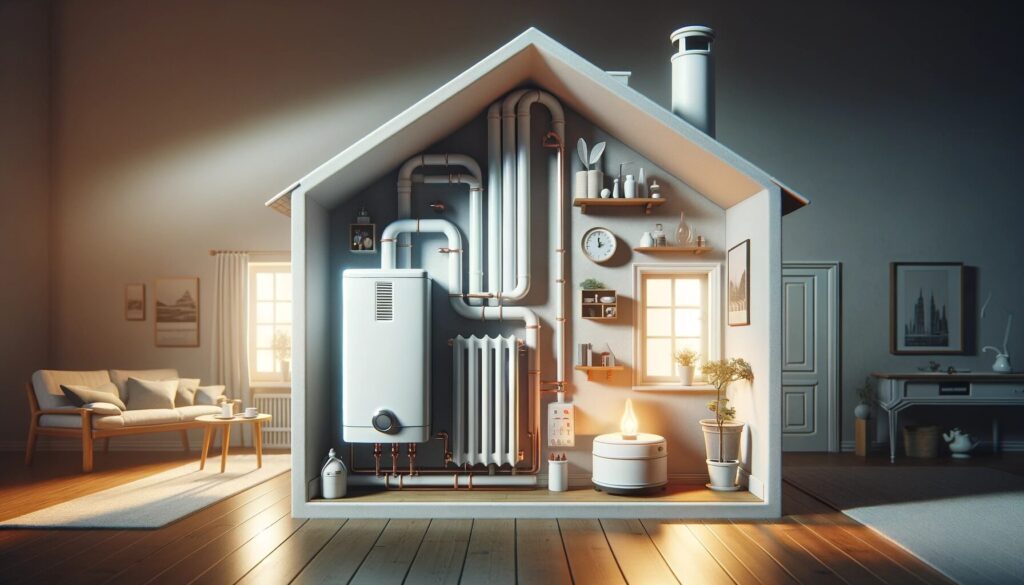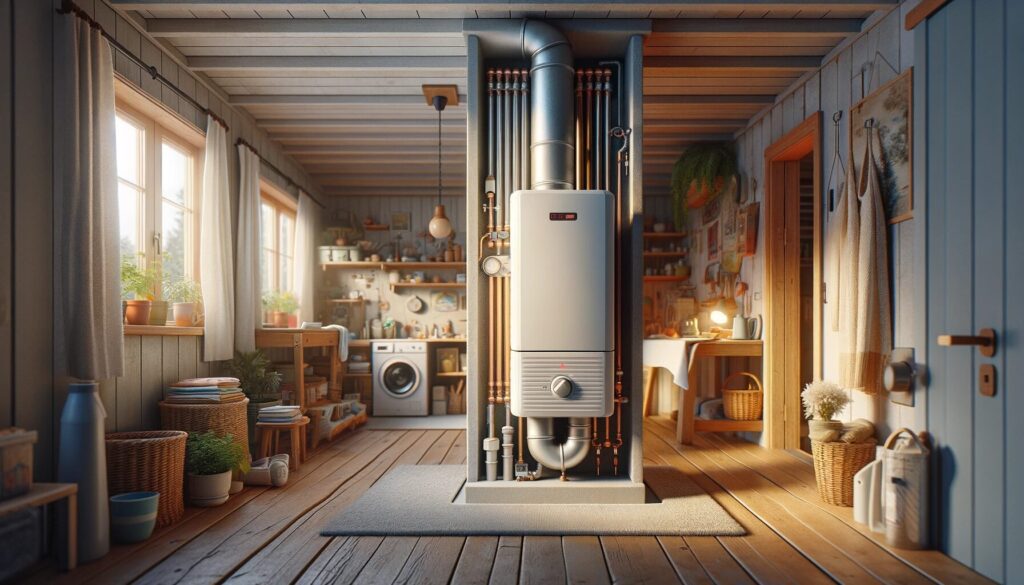Think of your furnace as the heart of your home’s heating system. Just as a heart needs regular check-ups to ensure health, so does your furnace require consistent maintenance. This isn’t only about comfort during those chilly nights, it’s about efficiency, longevity, and, above all, safety. Regular maintenance keeps your furnace running smoothly and efficiently, much like routine servicing keeps your car on the road without hiccups.
Short cycling is what happens when your furnace becomes the equivalent of a car that can’t decide whether to stop or go. It fires up, runs for a short period, then shuts down, only to repeat the process soon after. It’s a clear sign that something’s amiss – a signal that shouldn’t be ignored, for the sake of both your comfort and your wallet.

Understanding Short Cycling
To identify short cycling, listen and observe. If your furnace is starting and stopping more frequently than usual, if it’s running for only brief periods, or if the warmth in your home is inconsistent, you’re likely facing a short cycling issue. These are warning bells, and paying attention to them can save you from more significant troubles down the line.
Causes of Short Cycling
Let’s dissect the common causes of this frustrating problem:
- Thermostat Issues: A thermostat gone rogue can send mixed signals to your furnace. It’s essential to place it correctly – away from windows, drafts, or anything that might skew its temperature readings.
- Oversized Furnaces: Size matters, and bigger isn’t always better. An oversized furnace heats your space too quickly, triggering frequent shut-downs and restarts. It’s like using a chainsaw when you need a handsaw – overkill.
- Clogged Filters: A furnace struggling to breathe through a clogged filter is like a runner with a blocked airway. Regular cleaning or replacement of filters is simple yet crucial for smooth operation.
- Inadequate Airflow and Ventilation: Proper airflow is the lifeline of a furnace. Blocked vents are akin to blocked arteries, they impede the system’s efficiency and can lead to significant issues.
- Faulty Flame Sensors or Other Mechanical Problems: Flame sensors are the watchful eyes of your furnace. If they’re dirty or malfunctioning, they can prematurely shut down the system. Then, there are other potential mechanical issues – the small cogs and gears that can throw the whole system off if not in perfect working order.
With this guide, you’re equipped to tackle these issues head-on. We’ll dive deeper into each problem, exploring how to identify, troubleshoot, and rectify them. And remember, recognizing when to call in professional help is as important as any DIY solution. So, let’s roll up our sleeves and get your furnace running smoothly again.

Impact of Short Cycling
Let’s delve into the real-world repercussions of short cycling on your furnace, a scenario I’ve seen too often in my years on the job. It’s a bit like forcing a vehicle to repeatedly start and stop in heavy traffic – not only does it strain the engine, but it also guzzles fuel.
- Draining Efficiency: Every start-up of your furnace consumes more energy, akin to the extra effort it takes to get a car moving from a standstill. Frequent short cycles mean higher energy use, akin to leaving a tap running – a slow but steady drain on your resources.
- Accelerated Wear and Tear: Continuous cycling puts undue strain on your furnace’s components, similar to the stress on a car’s engine in stop-and-go traffic. This leads to earlier-than-expected wear, potentially resulting in costly repairs – think of it as the equivalent of replacing brakes or tires more frequently on a vehicle.
- The Cost to Your Wallet: This inefficiency and increased wear translate into higher utility bills and repair costs, much like how a car with poor fuel efficiency and frequent maintenance needs can become a financial burden.
Troubleshooting and Preventative Measures
In the spirit of empowering homeowners with the knowledge to tackle home issues, let’s walk through the steps to troubleshoot a short cycling furnace – a process reminiscent of methodically diagnosing a problem in a well-used tool.
- Examining the Thermostat: Just like ensuring a level is accurately calibrated, check if your thermostat is properly placed and functioning. It should be away from drafts and direct heat sources to accurately gauge the home’s temperature.
- Inspecting the Air Filter: A clogged air filter can choke a furnace’s efficiency, much like a saw struggling with a dull blade. Cleaning or replacing the filter is a basic yet vital step, akin to routine tool maintenance.
- Assessing Ventilation: Ensure vents are unobstructed, allowing for smooth airflow. It’s similar to maintaining a clear path on a job site for efficiency and safety.
Preventative Maintenance Tips: Adopt a regular maintenance routine, comparable to the scheduled servicing of important machinery. This includes periodic filter changes and keeping the furnace area free of debris.
Recognizing the Need for Professional Help: Sometimes, an issue surpasses the realm of DIY, much like certain tasks require a specialist’s touch. If the problem persists or if you’re unsure, it’s prudent to seek out a professional, akin to consulting an electrician for complex wiring work.
DIY Fixes for Common Short Cycling Issues
In tackling short cycling issues, it’s essential to approach the task with a blend of practical wisdom and detailed knowledge. Let’s explore some simple yet effective solutions that homeowners and handymen can implement, much like a seasoned carpenter fine-tuning a beloved tool.
- Cleaning and Replacing Filters: Consider the air filter as the lungs of your furnace. When clogged, it’s akin to trying to breathe through a cloth. Check the filter for any buildup of dust and debris. If it’s as clogged as a rain gutter after a storm, it’s time to clean it or replace it. This straightforward step can significantly improve the efficiency of your furnace.
- Checking the Thermostat: The thermostat plays a critical role, much like a blueprint in construction. It needs to be accurately calibrated and correctly positioned, away from any misleading heat sources or drafts. This ensures it measures the room temperature precisely, guiding the furnace to operate correctly.
- Ensuring Proper Airflow: Adequate airflow is as crucial to a furnace as clear space is to a work site. Ensure that all vents in your home are free from blockages, allowing the air to circulate freely. This not only aids in efficient heating but also reduces undue strain on the furnace.
Professional Solutions
There are times when a professional’s expertise is invaluable, much like needing an architect’s insight for complex structural changes in a renovation project.
- When to Call for Help: If the problem persists despite your best DIY efforts, or if the issue lies in areas requiring specialized knowledge, such as electrical or gas components, it’s time to call in a professional. This is akin to understanding when a project surpasses the realm of DIY and requires specialized skills and tools.
- Services Beyond DIY: Professional technicians bring an arsenal of advanced tools and deep knowledge. They can perform comprehensive diagnostics, address intricate mechanical issues, and even undertake significant repairs or replacements. This level of service is comparable to hiring a seasoned contractor for a major renovation.
FAQ Section
Often, the most common culprits are issues with the thermostat settings, clogged air filters, or an improperly sized furnace, much like how the most frequent problems in a home renovation often stem from foundational issues.
Signs of short cycling include the furnace turning on and off more frequently than usual, much like a sputtering engine. It’s a noticeable deviation from its normal operation.
Basic troubleshooting, such as checking filters or thermostats, is generally safe and within the skill set of most homeowners. However, when it comes to more complex systems, especially those involving gas or intricate electrical work, it’s prudent to seek professional help, similar to how a DIYer would defer to an electrician for complex wiring issues.
Regular maintenance is key. Aim to check and replace your filters every few months and consider an annual professional inspection. Think of it as regular maintenance checks to ensure the longevity of a well-used piece of machinery.
Indeed, prolonged short cycling can lead to significant wear and tear on your furnace, much like how repeated stress can weaken structural elements in a building over time.
The costs can vary. DIY fixes typically involve minimal expenses, akin to the cost of basic tools or materials. Professional repairs, however, can range significantly based on the complexity and severity of the issue, much like the varying costs of home repair projects.
